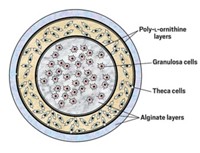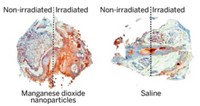Advertisement
Grab your lab coat. Let's get started
Welcome!
Welcome!
Create an account below to get 6 C&EN articles per month, receive newsletters and more - all free.
It seems this is your first time logging in online. Please enter the following information to continue.
As an ACS member you automatically get access to this site. All we need is few more details to create your reading experience.
Not you? Sign in with a different account.
Not you? Sign in with a different account.
ERROR 1
ERROR 1
ERROR 2
ERROR 2
ERROR 2
ERROR 2
ERROR 2
Password and Confirm password must match.
If you have an ACS member number, please enter it here so we can link this account to your membership. (optional)
ERROR 2
ACS values your privacy. By submitting your information, you are gaining access to C&EN and subscribing to our weekly newsletter. We use the information you provide to make your reading experience better, and we will never sell your data to third party members.
Undergraduate Education
Reversible Male Contraception With Gold Nanorods
Nanomedicine: Particles injected into testis tissue heat up and kill sperm cells when excited by infrared light
by Prachi Patel
June 10, 2013

Men’s options for birth control have significant downsides: Condoms are not effective if used incorrectly, and vasectomies require surgery and are irreversible. Doctors and scientists have for decades searched for more effective and desirable male contraception options. Researchers in China now propose a nonsurgical, reversible, and low-cost method (Nano Lett. 2013, DOI: 10.1021/nl400536d). They show that infrared laser light heats up gold nanorods injected into mice testes, leading to reduced fertility in the animals.
Research on male contraceptives has led to a few potential therapies, such as hormonal treatments similar to those used for women. But none have moved past clinical trials. “Seeking a simple, controllable, effective method for male contraception is a challenge to reproductive health,” says Fei Sun of the University of Science and Technology of China.
Sun, Jun Wang, and their colleagues developed the new method based on the long-known fact that heating testis tissue kills sperm cells. To do the heating, they turned to rod-shaped gold nanoparticles, which absorb infrared light and convert it into heat. Other researchers are developing ways to use these particles to heat up and kill tumor cells.
Sun’s team envisioned heating up testis tissue to different temperatures for certain effects. They hypothesized that with a low heat, the nanorods would kill sperm cells but not sperm-producing cells, thus causing reversible contraception because the treatment would preserve the ability to produce sperm. But with a high heat, the particles would permanently damage sperm-producing cells, shutting down sperm production and leading to sterilization.
Compared to hormonal methods, Sun says, the nanorod technique would have few side effects because it does not disrupt other hormonal pathways in the body. Also, the method would be less invasive than a surgical procedure like vasectomy. While the approach could be developed for humans in the future, Sun says, it could be immediately applied to sterilize domestic animals.
As a test of the method, the researchers studied male mice in six groups. Animals in each group got a single testicular injection of one of three solutions: a saline solution, a 105 µM gold nanorod solution, or a 145 µM gold nanorod solution. The scientists then exposed the animals’ testes to near-infrared laser light at one of two power densities for about 10 minutes.
Using an infrared camera, the team found that the temperature of the mice’s testes hit between 37 and 45 °C, depending on the nanorod concentration and laser power. High concentrations and high powers lead to high temperatures. Normal mice testis tissue hovers around 29 °C.
As a fertility test, the researchers let the mice mate at seven and 60 days after treatment and calculated fertility as the percentage of pregnancies per total number of mated females. After seven days, mice that had experienced testes temperatures of 37 or 40 °C were 10% as fertile as untreated mice. Their fertility recovered to 50% at 60 days. Meanwhile, testes temperatures of 45 °C permanently sterilized the animals; all of their sperm-generating cells had died, and they produced no pups.
Diana L. Blithe, who runs a male contraception research program at the National Institute of Child Health and Human Development, says that to develop the method for people the team would need to ensure that the gold nanoparticles don’t migrate to other organs and that the laser irradiation is precisely targeted on the testes.
The method is appropriate for companion animals, says John K. Amory, a contraception researcher at the University of Washington, Seattle. But men may find it undesirable due to possible testicular pain during and after the injections. He says that long-term studies of the sterilization form of the technique will be important to ensure that the method is, in fact, permanent.





Join the conversation
Contact the reporter
Submit a Letter to the Editor for publication
Engage with us on Twitter